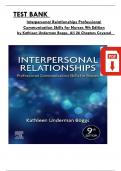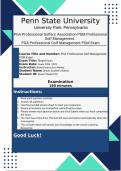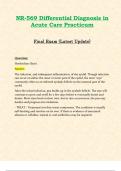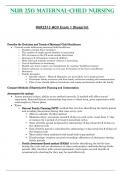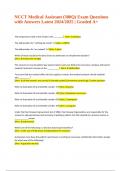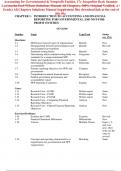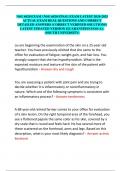Exam (elaborations)
Interpersonal Relationships: Professional Communication Skills for Nurses 9th Edition TEST BANK by Kathleen Underman Boggs, All Chapters 1 - 26 Complete, Verified Latest Edition
TEST BANK For Interpersonal Relationships, 9th Edition, Professional Communication Skills for Nurses, Author : Kathleen Underman Boggs, All Chapters 1 - 26, Complete Newest Version Boggs 9th edition test bank pdf free download Boggs 9th edition test bank free download Boggs 9th edition t...
[Show more]
